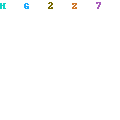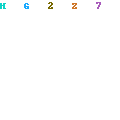There are three constructs used in C that make no sense at all when first encountered because they are not intuitive, but they greatly increase the efficiency of the compiled code and are used extensively by experienced C programmers. You should therefore be exposed to them and learn to use them because they will appear in most, if not all, of the programsyou see in the publications. Load and examine the file named cryptic.c for examples of the three new constructs.
main( )
{
int x = 0,y = 2,z = 1025;
float a = 0.0,b = 3.14159,c = -37.234;
/* incrementing */
x = x + 1; /* This increments x */
x++; /* This increments x */
++x; /* This increments x */
z = y++; /* z = 2, y = 3 */
z = ++y; /* z = 4, y = 4 */
/* decrementing */
y = y - 1; /* This decrements y */
y--; /* This decrements y */
--y; /* This decrements y */
y = 3;
z = y--; /* z = 3, y = 2 */
z = --y; /* z = 1, y = 1 */
/* arithmetic op */
a = a + 12; /* This adds 12 to a */
a += 12; /* This adds 12 more to a */
a *= 3.2; /* This multiplies a by 3.2 */
a -= b; /* This subtracts b from a */
a /= 10.0; /* This divides a by 10.0 */
/* conditional expression */
a = (b >= 3.0 ? 2.0 ; 10.5 ); /*This expression */
if (b >= 3.0) /* And this expression */
a = 2.0; /* are identical, both */
else /* will cause the same */
a = 10.5; /* result. */
c = (a > b?a:b); /* c will have the max of a or b */
c = (a > b?b:b); /* c will have the min of a or b */
}
In this program, some variables are defined and initialized in the same statements for use below. The first should come as no surprise to you. The next two statements also add one to the value of "x", but it is not intuitive that this is what happens. It is simply be definition that this is true. Therefore, by definition of the C language, a double plus sign either before or after a variable increments that variable by 1. Additionally, if the plus signs are before the variable, the variable is incremented before it is used, and if the plus signs are after the variable, the variable is used, then incremented. In the next statement, the value of "y" is assigned to the variable "z", then "y" is incremented because the plus signs are after the variable "y". In the last statement of the incrementing group of example statements, the value of "y" is incremented then its value is
assigned to the variable "z". The next group of statements illustrate decrementing a variable by one. The definition works exactly the same way for decrementing as it does for incrementing. If the minus signs are before the variable, the variable is decremented, then used, and if the minus signs are after the variable,
the variable is used, then decremented.
main( )
{
int x = 0,y = 2,z = 1025;
float a = 0.0,b = 3.14159,c = -37.234;
/* incrementing */
x = x + 1; /* This increments x */
x++; /* This increments x */
++x; /* This increments x */
z = y++; /* z = 2, y = 3 */
z = ++y; /* z = 4, y = 4 */
/* decrementing */
y = y - 1; /* This decrements y */
y--; /* This decrements y */
--y; /* This decrements y */
y = 3;
z = y--; /* z = 3, y = 2 */
z = --y; /* z = 1, y = 1 */
/* arithmetic op */
a = a + 12; /* This adds 12 to a */
a += 12; /* This adds 12 more to a */
a *= 3.2; /* This multiplies a by 3.2 */
a -= b; /* This subtracts b from a */
a /= 10.0; /* This divides a by 10.0 */
/* conditional expression */
a = (b >= 3.0 ? 2.0 ; 10.5 ); /*This expression */
if (b >= 3.0) /* And this expression */
a = 2.0; /* are identical, both */
else /* will cause the same */
a = 10.5; /* result. */
c = (a > b?a:b); /* c will have the max of a or b */
c = (a > b?b:b); /* c will have the min of a or b */
}
In this program, some variables are defined and initialized in the same statements for use below. The first should come as no surprise to you. The next two statements also add one to the value of "x", but it is not intuitive that this is what happens. It is simply be definition that this is true. Therefore, by definition of the C language, a double plus sign either before or after a variable increments that variable by 1. Additionally, if the plus signs are before the variable, the variable is incremented before it is used, and if the plus signs are after the variable, the variable is used, then incremented. In the next statement, the value of "y" is assigned to the variable "z", then "y" is incremented because the plus signs are after the variable "y". In the last statement of the incrementing group of example statements, the value of "y" is incremented then its value is
assigned to the variable "z". The next group of statements illustrate decrementing a variable by one. The definition works exactly the same way for decrementing as it does for incrementing. If the minus signs are before the variable, the variable is decremented, then used, and if the minus signs are after the variable,
the variable is used, then decremented.

